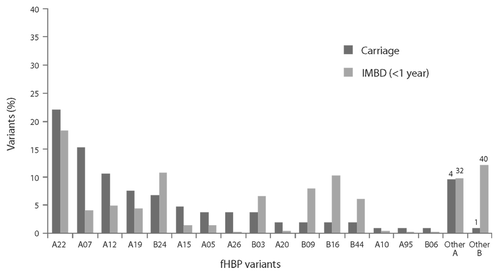Figures & data
Figure 1. Summary of the age distribution of invasive meningococcal serogroup B (MnB) disease in 2009 from the United States (A and B) and the European Union (C and D). Panels A and C list incidence rate per 100,000. Panel B provides the estimated number of cases in the US. Panel D illustrates the proportion (and number of cases) in European Centre for Disease Prevention and Control (ECDC) participating countries for infants (< 1 y of age) and adolescents and young adults (11–25 y of age). US data were obtained from the Centers for Disease Control and Prevention (CDC) Active Bacterial Core Surveillance sites which includes 32 of the 174 reported cases of notifiable disease in 2009.Citation6,Citation17 The European data were obtained from the ECDC and European Surveillance System (TESSy),Citation7 which included country reports from Austria (AT), Belgium (BE), Cyprus, the Czech Republic (CZ), Denmark (DK), Estonia (ES), Finland, France (FR), Germany (DE), Greece (GR), Hungary (HU), Iceland, Ireland (IE), Italy (IT), Latvia, Lithuania, Luxembourg, Malta, Netherlands (NL), Norway, Poland (PL), Portugal, Romania, Slovakia, Slovenia, Spain, Sweden and the United Kingdom (UK).
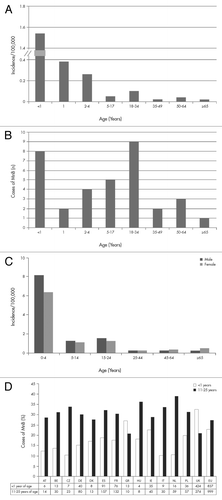
Figure 2. The phylogenetic tree of factor H binding protein (fHBP) variants expressed by meningococcal serogroup B (MnB) strains killed in serum bactericidal antibody assay with human complement (hSBA). The phylogenetic tree of fHBP proteins is based on a clustal alignment and drawn using MEGA 5. Subfamily B (≈70% of isolates) is equivalent to variant 1, and subfamily A (≈30% of isolates) encompasses variants 2 and 3.Citation27,Citation41 The fHBP proteins included as components of the Pfizer lipidated bivalent rLP2086 vaccine are indicated in green. Novartis 4CMenB variant 1.1 = B24.
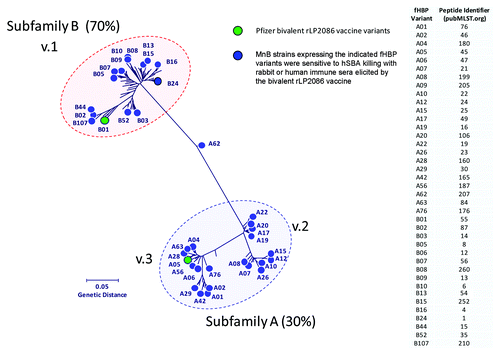
Figure 3. Factor H binding protein subfamily prevalence for invasive meningococcal serogroup B disease isolates obtained from 2001–2006 in (A) the United Kingdom and (B) the United States Active Bacterial Core Surveillance sites. Data from the UK Healthcare Protection AgencyCitation18 and the US Centers for Disease Control.Citation6
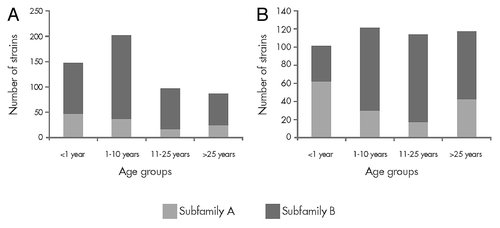
Figure 4. Distribution of factor H binding protein (fHBP) variants in invasive meningococcal serogroup B disease (IMBD). IMBD isolates were obtained from a prevalence-based collection of IMBD isolates collected from reference laboratories (US, Norway, Czech Republic, Germany, Spain, France, England, Wales and Northern Ireland spanning the period of 2000 to 2006).
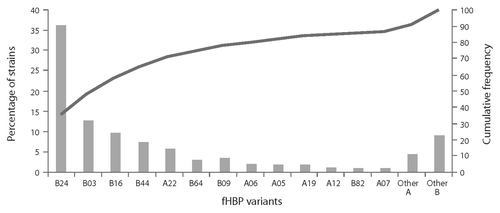
Figure 5. The bivalent factor H binding protein (fHBP) vaccine has the potential to protect against meningococcal strains expressing either subfamily A or B fHBP variants. (A) The percentage of adolescent subjects (11 to 18 y of age) with an hSBA titer of ≥ 1:4; data from hSBAs performed with 8 meningococcal serogroup B (MnB) isolates expressing different fHBP variants are shown. Sera were obtained from study B1971005.Citation39 (B) The percentage of young adult subjects (18 to 25 y of age) with an hSBA titer of ≥ 1:4; data from hSBAs performed with meningococcal serogroup B (MnB) isolates expressing 9 different fHBP variants are shown. Sera were obtained from study B1971003.Citation40 hSBA titers of serum samples before (light gray bars) and after vaccination (dark gray bars) are illustrated. *fHBP variants homologous to bivalent rLP2086 vaccine antigens.
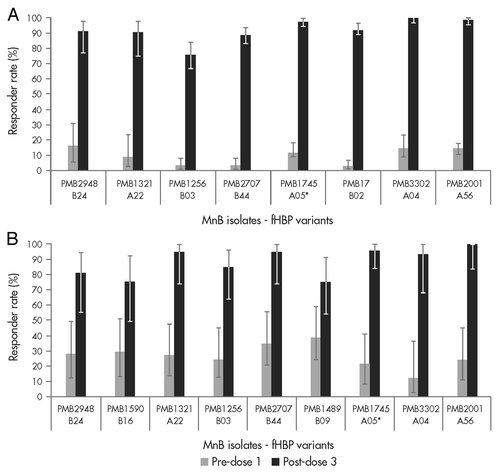
Figure 6. Distribution of carriage isolates from the United Kingdom and United States across meningococcal serogroups. Data from Bidmos et al.Citation2 (United Kingdom, 2008–2009 academic year) and Marsh et al.Citation20 (United States, 1998 and 2006–2007). NG represents non-groupable strains.
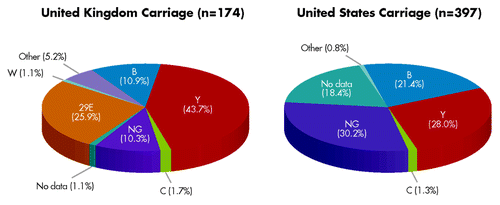
Table 1. fHBP subfamily and meningococcal serogroup of carriage isolates from the United Kingdom and United States
Figure 7. Factor H binding protein (fHBP) variants detected in United Kingdom (2008–2009 academic year) and United States (1998 and 2006–2007) carriage strains (n = 104) and invasive meningococcal B (IMBD) strains from adolescents and young adults (11 to 25 y of age) the United States and Europe (n = 445) from 2001–2006. The number of unique fHBP variants included in other “subfamily A” and “other subfamily B” are indicated above the bars

Figure 8. Factor H binding protein (fHBP) variants detected in meningococcal serogroup B (MnB) carriage isolates (n = 104) from adolescents and young adults (11 to 25 y of age; 1998, 2006–2007 and the 2008–2009 academic year) and MnB invasive disease (IMBD) isolates (n = 469) from infants (< 1 y of age) from 2001–2006. The number of unique fHBP variants included in “other subfamily A” and “other subfamily B” are indicated above the bars.
